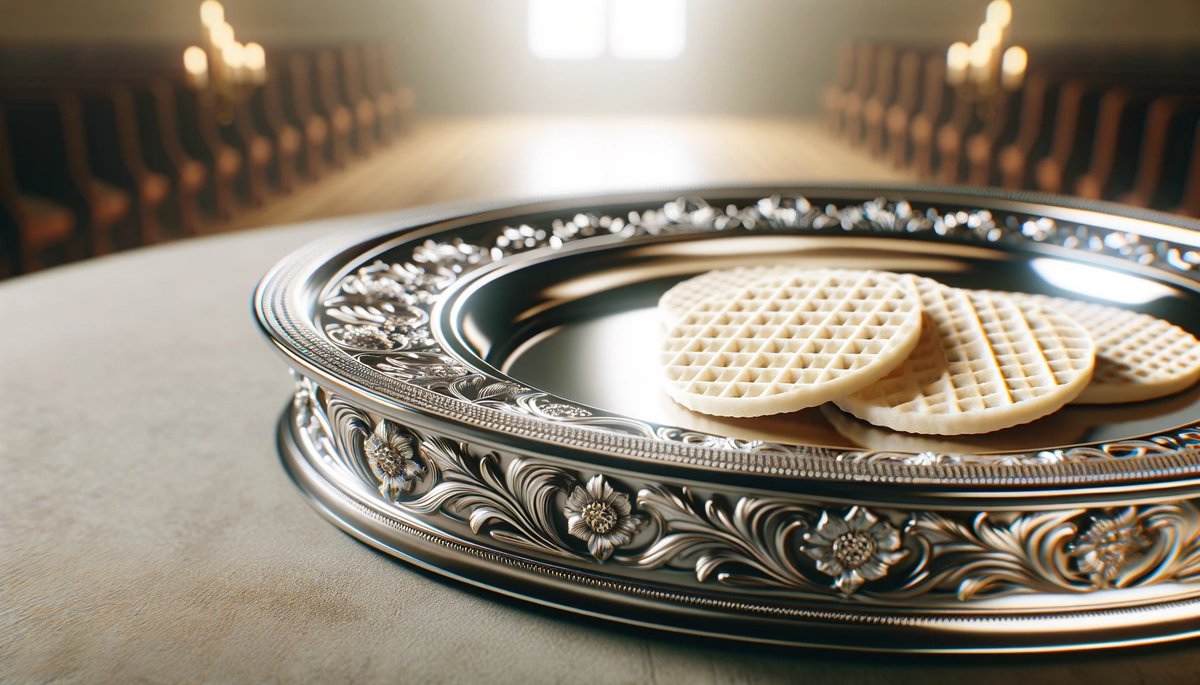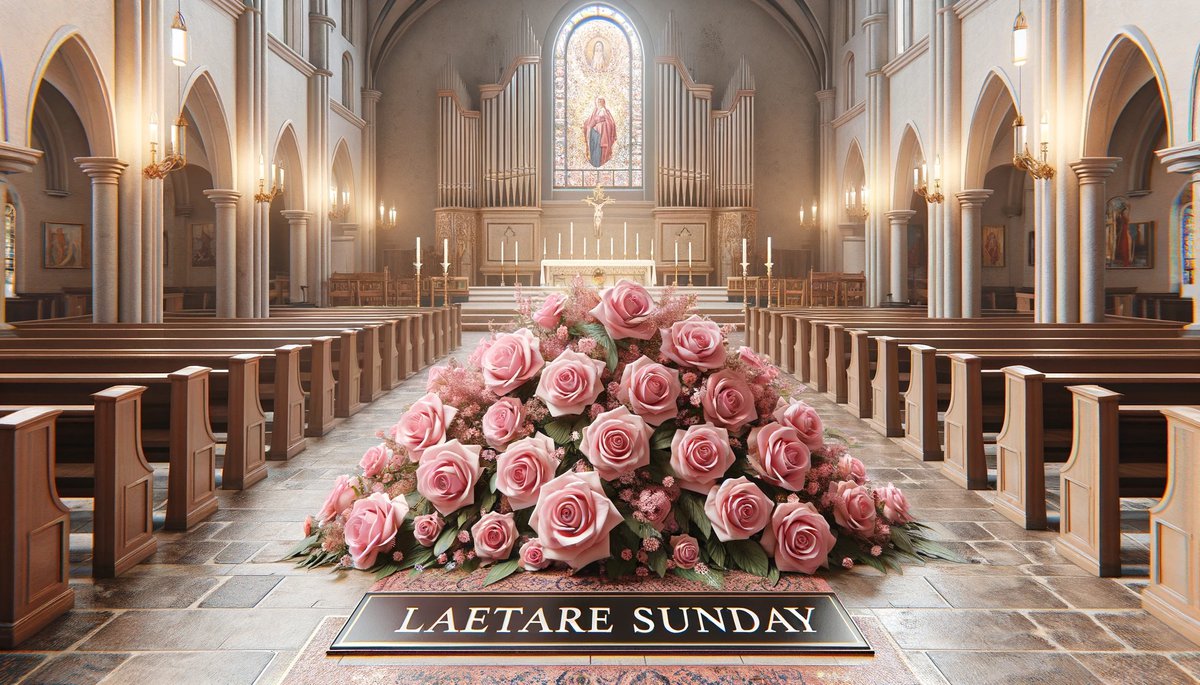Home>Theology and Spirituality>What Is A Communion Plate Called


Theology and Spirituality
What Is A Communion Plate Called
Published: February 19, 2024
Ericka Andersen, an editor at Christian.net, expertly merges digital strategy with content creation, focusing on faith and societal issues. Her communication skills enhance the platform's engaging narratives, fostering meaningful dialogue on belief's impact on society.
Discover the name for a communion plate and its significance in theology and spirituality. Explore the meaning and use of this sacred object.
(Many of the links in this article redirect to a specific reviewed product. Your purchase of these products through affiliate links helps to generate commission for Christian.net, at no extra cost. Learn more)
Table of Contents
Introduction
Communion plates hold a significant place in the religious practices of Christianity, serving as vessels for the sacred act of communion. Also known as patens, these plates play a crucial role in the Eucharist, symbolizing the body of Christ in the form of consecrated bread. The rich history and symbolism associated with communion plates make them an integral part of Christian worship.
Throughout the centuries, communion plates have evolved in design and purpose, reflecting the cultural and religious contexts in which they are used. Understanding the origins, names, and symbolism of these plates provides insight into the profound spiritual significance they hold for believers.
In this article, we will delve into the history of communion plates, explore the various names by which they are known, uncover the symbolism imbued within their design, and examine their modern-day use in Christian worship. By doing so, we aim to shed light on the profound spiritual and cultural significance of these sacred vessels.
Read more: What Is A Communion Table Called
History of Communion Plates
The history of communion plates is deeply intertwined with the origins of Christian worship and the ritual of communion itself. Dating back to the early centuries of Christianity, the use of communal vessels for the Eucharist has been a fundamental aspect of Christian liturgy. The earliest communion plates were simple in design, often crafted from basic materials such as wood or clay.
As Christianity spread and evolved, so too did the communion plates. During the medieval period, these plates became more ornate, reflecting the artistic and religious fervor of the time. Intricate designs and precious metals were employed to create communion plates that were not only functional but also visually stunning, serving as a testament to the sacred nature of the Eucharist.
The Protestant Reformation brought about significant changes in the use and design of communion plates. In some traditions, the emphasis shifted towards simplicity and functionality, with a focus on the symbolic significance of the plate rather than its aesthetic value. Conversely, in other traditions, communion plates continued to be crafted with elaborate designs, symbolizing the importance of the Eucharist in the life of the church.
The history of communion plates is also marked by cultural and regional variations. Different Christian denominations and traditions have developed unique styles and practices regarding the use of communion plates, reflecting the diverse ways in which the Eucharist is celebrated and understood within the broader Christian community.
Today, communion plates continue to hold a central role in Christian worship, serving as a tangible link to the rich history and tradition of the Eucharist. Whether simple or ornate, these sacred vessels bear witness to the enduring significance of the communion ritual in the life of the church, connecting contemporary believers to the ancient roots of their faith.
Different Names for Communion Plates
Communion plates, while commonly referred to by that name, are known by various other terms across different Christian traditions and denominations. These alternative names often reflect the diverse linguistic, cultural, and historical contexts in which the Eucharist is celebrated. Understanding these different names provides insight into the rich tapestry of Christian worship and the varied ways in which the ritual of communion is expressed.
-
Patens: The term "paten" is derived from the Latin word "patina," meaning "shallow dish." In many liturgical traditions, particularly within Catholicism and Anglicanism, the communion plate is referred to as a paten. This term underscores the plate's function as a vessel for holding the consecrated bread during the Eucharist.
-
Communion Dish: In some Protestant denominations, particularly those with a more minimalist approach to liturgical practices, the communion plate is simply called a "communion dish." This straightforward name emphasizes the practical purpose of the plate as a receptacle for the bread shared during the communion service.
-
Eucharistic Plate: The term "Eucharistic plate" is often used in high church traditions, such as in the Eastern Orthodox Church and certain Anglican and Catholic settings. This name emphasizes the sacramental significance of the plate within the context of the Eucharist, highlighting its role in the ritual reenactment of Christ's Last Supper.
-
Serving Plate: In some contemporary and non-liturgical Christian communities, the communion plate may be referred to simply as a "serving plate." This name reflects a more functional and utilitarian understanding of the plate as a vessel for serving the bread and, in some traditions, the wine during the communion service.
-
Host Plate: Within Catholic and Orthodox traditions, the communion plate may also be called a "host plate," underscoring its association with the consecrated host, or the bread that is believed to become the body of Christ during the Eucharistic celebration.
These diverse names for communion plates reflect the multifaceted nature of Christian worship and the varied theological emphases within different denominations. While the names may differ, the central significance of the communion plate as a sacred vessel for the Eucharist remains a unifying element across Christian traditions.
Symbolism of Communion Plates
The communion plate, or paten, holds profound symbolism within the context of Christian worship, encapsulating the spiritual significance of the Eucharist and the theological understanding of Christ's presence in the bread shared during communion. The symbolism imbued within the communion plate extends beyond its physical form, speaking to the core beliefs and practices of the Christian faith.
Representation of the Last Supper
Central to the symbolism of the communion plate is its representation of the Last Supper, the final meal that Jesus shared with his disciples before his crucifixion. As the plate holds the consecrated bread, it serves as a tangible link to this pivotal event in Christian theology, embodying the act of Jesus breaking bread and sharing it with his followers. In this sense, the communion plate becomes a visual and tactile reminder of the foundational narrative of the Christian faith, evoking the presence of Christ among his disciples.
Read more: Why Is It Called Communion
Significance of the Bread
The communion plate symbolizes the sacred nature of the bread used in the Eucharist. According to Christian doctrine, the bread represents the body of Christ, imbued with spiritual significance as a means of grace and communion with God. As the bread is placed upon the communion plate, it becomes a focal point of reverence and devotion, embodying the presence of Christ and the nourishment of the soul through participation in the Eucharistic meal.
Unity and Community
Beyond its theological symbolism, the communion plate also signifies the unity and community of believers gathered to partake in the Eucharist. As the bread is shared from the common plate, it symbolizes the communal aspect of the Christian faith, emphasizing the shared experience of partaking in the body of Christ. The act of receiving the bread from the same plate underscores the interconnectedness of the faithful, fostering a sense of spiritual communion and solidarity within the worshiping community.
Connection to Tradition and History
Furthermore, the communion plate symbolizes the continuity of Christian tradition and history. Across centuries and diverse cultural contexts, the use of the communion plate has remained a constant in Christian worship, serving as a tangible link to the practices of early believers and the enduring significance of the Eucharist. The symbolism of the communion plate thus extends beyond the present moment, connecting contemporary worshipers to the rich tapestry of Christian heritage and the timeless ritual of communion.
In essence, the communion plate embodies a multiplicity of symbols, encapsulating the foundational narratives, theological beliefs, communal ethos, and historical continuity of the Christian faith. As a sacred vessel for the Eucharist, the communion plate serves as a visual and tactile expression of the profound spiritual truths and communal bonds that define Christian worship and belief.
Modern Use of Communion Plates
In contemporary Christian worship, the use of communion plates continues to be a central element of the Eucharistic celebration. While the fundamental purpose of the communion plate remains unchanged—to hold the consecrated bread during the communion service—its modern use reflects the evolving practices and sensibilities of the church.
One notable aspect of the modern use of communion plates is the diversity of designs and materials employed. Churches and denominations now utilize a wide array of communion plates, ranging from traditional metal patens to more contemporary ceramic or glass vessels. This diversity of materials and designs reflects a broader trend within Christian worship, where a balance is struck between honoring tradition and embracing innovation. Some congregations opt for intricately decorated communion plates, adorned with religious symbols and motifs, while others prefer minimalist, unadorned designs that emphasize simplicity and functionality.
Moreover, the modern use of communion plates also encompasses a heightened awareness of inclusivity and accessibility. Many churches have adopted practices to accommodate individuals with dietary restrictions or special needs, such as offering gluten-free communion bread or providing alternative forms of the Eucharistic meal. In this regard, communion plates serve not only as vessels for the consecrated bread but also as symbols of hospitality and inclusiveness, ensuring that all members of the faith community can participate fully in the sacramental ritual.
In addition, the modern use of communion plates reflects a renewed emphasis on ecological stewardship and sustainability. Some congregations have turned to eco-friendly communion plates made from sustainable materials, aligning the ritual of communion with the broader ethical imperative of caring for the environment. This conscientious approach to the use of communion plates underscores the interconnectedness of faith and environmental responsibility, signaling a contemporary reimagining of the sacred vessels within the context of ecological awareness.
Furthermore, the modern use of communion plates extends beyond the physical act of holding the consecrated bread. In many churches, communion plates are integrated into multimedia presentations or digital platforms, where the symbolism of the plate is amplified through visual and interactive elements. This innovative approach seeks to engage worshipers in new ways, leveraging technology to deepen the spiritual experience of the Eucharistic celebration while retaining the timeless significance of the communion plate as a sacred vessel.
In essence, the modern use of communion plates reflects a dynamic interplay between tradition and adaptation, as churches seek to honor the rich heritage of the Eucharist while responding to the evolving needs and sensibilities of contemporary worshipers. As a result, communion plates continue to serve as potent symbols of the enduring significance of the Eucharist, embodying the spiritual, communal, and cultural dimensions of Christian worship in the modern era.














